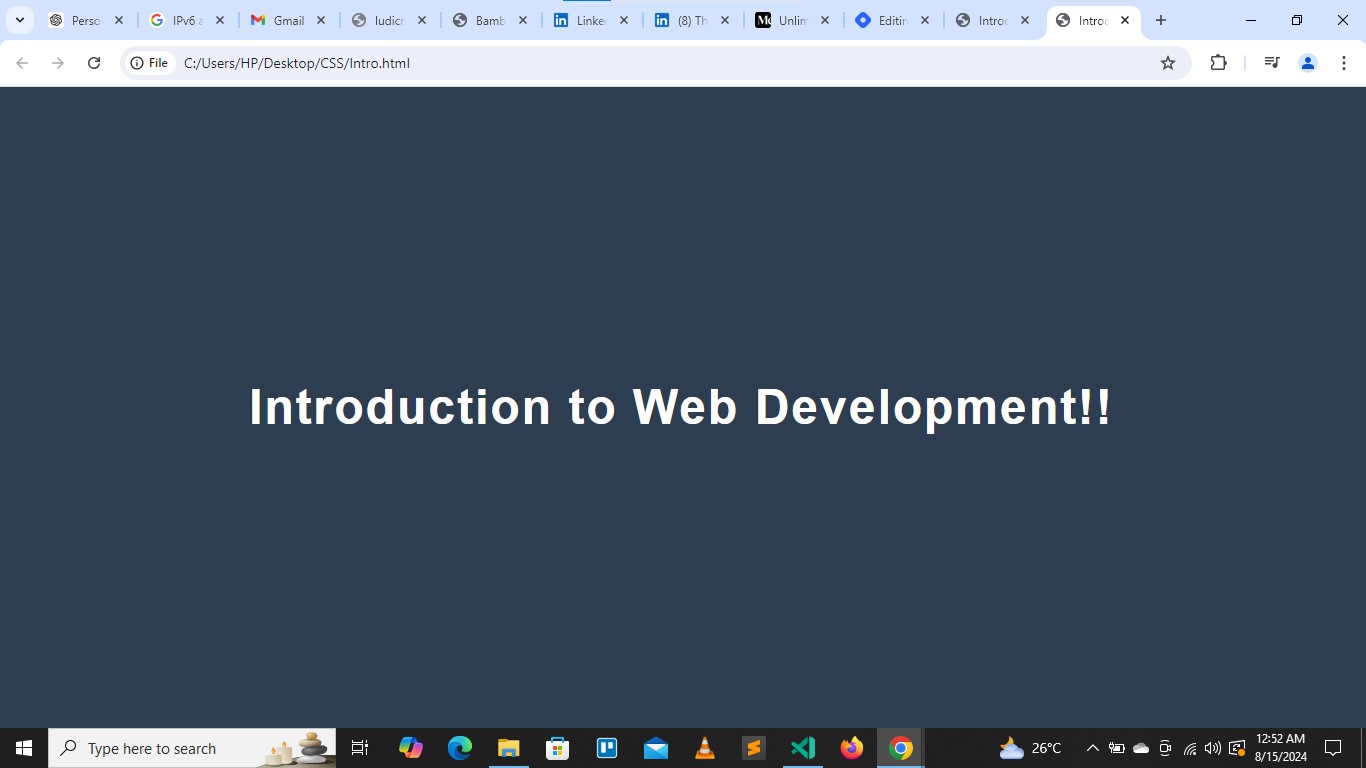DAY 10: Introduction To Web Development
 IfeanyiChukwu Obi
IfeanyiChukwu ObiTable of contents

My main motivation to begin coding again, and also blogging, is a cohort class I just recently joined.
When I started this journey, I was both excited and a little nervous about diving into the world of web development. It's a space that is constantly evolving, full of creativity, and packed with opportunities to build something truly unique from scratch.
In my class this week, we’re kicking things off by exploring the foundation of it all - INTRODUCTION TO WEB DEVELOPMENT.
Scenario: Imagine being able to craft your corner of the internet, a place where your ideas come to life and where others can interact with your vision. That’s what web development is all about! It’s the art and science of building, creating, and maintaining websites and web applications that run online on a browser, making it possible for users to connect, explore, and engage.
But how do you actually build a website or a web app? It all starts with code!
Web Development Basics:
Web development refers to the process of building, creating, and maintaining websites and web applications that run online on a browser and allow for user interaction. This is achieved by writing lines of code using different programming languages, each serving a unique purpose.
NOTE: Whether you’re structuring a website’s content, designing its look, or making it functional, there’s a language for every task.
Common Programming Languages: There are various programming languages used to perform a variety of tasks. They are:
HTML (Hypertext Markup Language): This is the backbone of any website, used for structuring content.
CSS (Cascading Style Sheets): It makes the website look good. E.g: colors, layouts, and fonts.
JavaScript: This language adds interactivity to the site, making it dynamic and responsive.
Python: This is a versatile language, often used for backend development.
Ruby: It is known for its simplicity and productivity in web applications.
PHP (Hypertext Preprocessor): This language is a popular choice for server-side scripting.
Types of Web Development:
1. Front-End Development:
Have you ever wondered how a website looks so sleek and user-friendly? That’s all thanks to front-end development. This is the portion that deals with making the design and layout of a site; that is the part of the website you see and interact with.
Front-end development brings the site to life!
The big question is: What do front-end developers do?
Planning and designing the website’s layout.
Writing codes to create the user interface.
Integrating APIs to connect the front end with the backend or third-party services.
Ensuring the site is responsive across all devices.
Testing user experiences and debugging.
Uploading the site to a web server and making it live.
They also perform regular maintenance to keep everything running smoothly, optimizing performance.
Front-end developers use frameworks and libraries. These frameworks and libraries are pre-written code and tools that make the development process faster and give a more structured approach to website development.
Examples: React, Angular, Vue.js, Bootstrap, Tailwind CSS
2. Back-End Development:
Now, if front-end development is all about what the user sees, back-end development is everything behind the scenes. It is the portion that focuses on the underlying systems that power the website, making sure everything works as it should.
The big question is: What Does a Back-End Developer Do?
Creating or building the basic framework of a website.
Designing the system architecture.
Writing server-side code.
Setting up databases and integrating APIs.
Testing to ensure the functionality of the code.
Deployment using CI/CD (Continuous Integration/Continuous Deployment) pipelines.
Continuous maintenance to optimize performance.
Back-end developers rely on frameworks, which are pre-built structures that offer developers a solid foundation for constructing server-side components. They ensure that a structured environment is provided to speed up development and improve the website's scalability and maintenance.
Examples: Express.js (Node.js), Django (Python), Flask (Python), Spring Boot (Java), ASP.NET
3. Full-Stack Development:
Some developers are skilled in both front-end and back-end development. These full-stack developers are versatile professionals who understand the entire web development process, from the user interface to the server infrastructure, to build complete web applications from start to finish.
I can't wait to see the incredible things that will happen in this cohort. Let's make this count and build something amazing!
Happy coding, everyone! 🚀💻
Subscribe to my newsletter
Read articles from IfeanyiChukwu Obi directly inside your inbox. Subscribe to the newsletter, and don't miss out.
Written by

IfeanyiChukwu Obi
IfeanyiChukwu Obi
I am a medical student at Alex Ekwueme Federal University Ndufu Alike, Ikwo (AE-FUNAI), Ebonyi State. Abuja. Nigeria. Due to graduate in a few years. I also took a Virtual Assistant course with the African Leadership X (ALX) program. I am a focused student with knowledge of customer service, data entry, and records management, and a good team player. I am hardworking and versatile with proven communication, organizational, and computer skills. My key skills are: Organization, Being proactive,Microsoft Office, Google Workspace, Good Communication skills, Internet Research, Scheduling, Adaptability, Resourcefulness. I just recently started my journey into the world of programming as well.